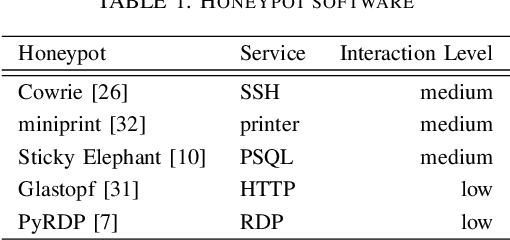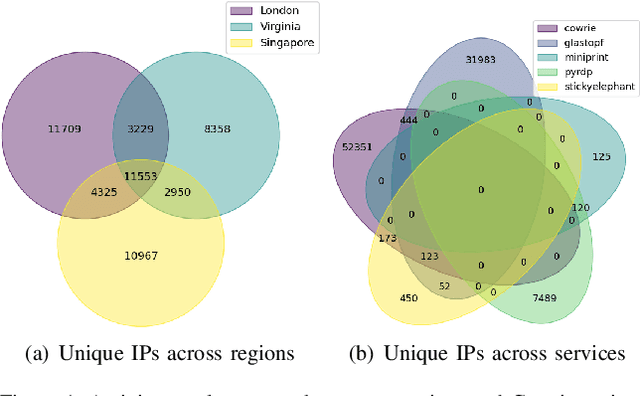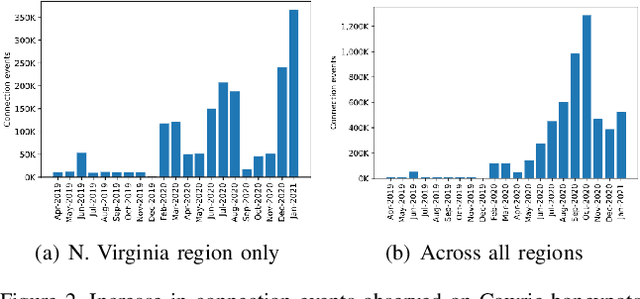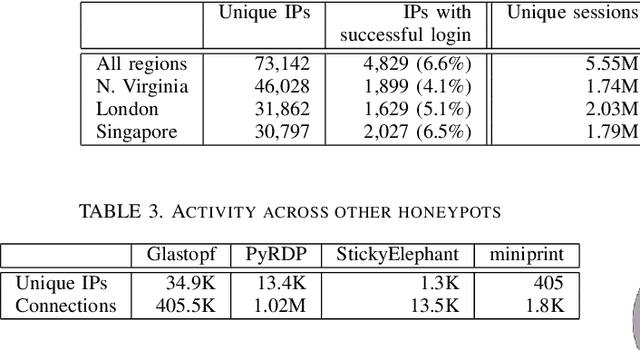Daehyun Kyoung
Measuring and Clustering Network Attackers using Medium-Interaction Honeypots
Jun 27, 2022



Abstract:Network honeypots are often used by information security teams to measure the threat landscape in order to secure their networks. With the advancement of honeypot development, today's medium-interaction honeypots provide a way for security teams and researchers to deploy these active defense tools that require little maintenance on a variety of protocols. In this work, we deploy such honeypots on five different protocols on the public Internet and study the intent and sophistication of the attacks we observe. We then use the information gained to develop a clustering approach that identifies correlations in attacker behavior to discover IPs that are highly likely to be controlled by a single operator, illustrating the advantage of using these honeypots for data collection.
 Add to Chrome
Add to Chrome Add to Firefox
Add to Firefox Add to Edge
Add to Edge